Looking for the best things to do on your next trip to Vienna? With its opulent palaces, world-class art, and vibrant café culture, the city offers a wealth of experiences. This guide covers what we believe are the very best activities and sights in Vienna.
By: Mark Barnes | Last Updated: | Jump to Comments
For over 300 years, the Habsburg royal family ruled the Austro-Hungarian Empire, leaving Vienna steeped in the grandeur and power of that era.
Few places in Europe can rival Viennese splendor, where imposing state apartments filled with priceless royal collections and grand masterpieces stand alongside magnificent Gothic and Baroque architecture.
Many people find Vienna pristine yet lacking atmosphere.
That’s understandable, but beyond the palaces and regal squares, there are charming coffeehouses, trendy neighbourhoods, colourful streets, and cool bars.
We have selected some of the major attractions as well as a few local gems. This guide reflects our personal view of the must-see and must-do experiences in Vienna.

VIENNA MAP
To help you plan your trip to Vienna, we have included all the main attractions on the map below.
USING OUR MAPS. Click on the top right corner to open in the Google Maps app. Click on the star to save to your Google account.
THINGS TO DO IN VIENNA
1. GET YOUR BEARINGS IN THE INNERE STADT
The Innere Stadt is the historic centre of Vienna and a UNESCO World Heritage Site, containing many of the city’s most famous landmarks.
Before we cover those, we just wanted to mention that it’s worth spending a few hours exploring the streets of the Innere Stadt to get your bearings in Vienna.
The area dates back to Roman times, with medieval and Baroque influences obvious everywhere you look. There are majestic façades, narrow passageways, lively squares, charming shops, and hidden churches to discover.
You’ll also find some of the main attractions we cover in this guide, including St Stephen’s Cathedral, the Vienna State Opera, City Hall and Hofburg Palace.
But it’s also great to explore some hidden corners.
Palais Kinsky is a magnificent Baroque palace with a stunning entrance hall and grand staircase.
Ferstel Passage is a quaint old shopping arcade with several notable shops. Xocolat has excellent chocolates; Caffe Couture does great coffee; and Beaulieu is a fine French restaurant.
All the locations are marked on our map above.



2. HOFBURG PALACE
The Habsburgs, also known as the House of Austria, were one of the most prominent royal families in Europe. For 300 years, they sat on the throne of the Holy Roman Empire.
Their home was the sprawling Hofburg Palace, which originally started as a medieval defensive castle in 1279. Over the centuries, it evolved into the sprawling palace you can visit today, boasting 2,600 rooms.
The complex comprises a series of interconnected buildings, parks, courtyards, and squares, many of which are open to the public at no cost.
However, the main museums within the complex have an entrance fee. Here are the main ones we enjoyed the most:
- Sisi Museum & Imperial Apartments – See the personal objects of Empress Elisabeth and Emperor Franz Joseph in lavish rooms.
- Spanish Riding School – White Lipizzaner stallions perform classic equestrian movements in front of the Baroque palace.
- Imperial Treasury Museum – Contains some of the most important treasures in the world, including the Crown Jewels and regalia of the Holy Roman Empire.
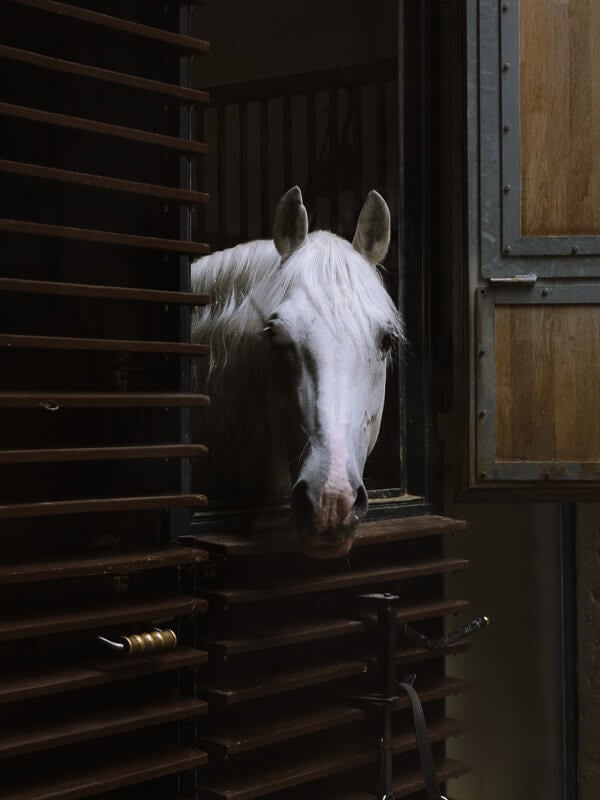


3. STATE HALL, AUSTRIAN NATIONAL LIBRARY
Prunksaal, the State Hall in the centre of the Austrian National Library, was the one site that impressed us the most on our last visit to Vienna.
It is one of the world’s most stunning baroque libraries and the largest library in Austria. The collection comprises over 200,000 medieval leather-bound books, rare manuscripts, maps, and many other treasures, displayed in rotating exhibitions.
The domed roof, supported by towering pillars with intricately carved marble reliefs, is covered with beautiful frescoes.
Guided tours are available in several languages; however, we just purchased entry tickets from the Austrian National Library website and used the information cards for background.



4. STEPHANDSOM
Stephandsom (St Stephen’s Cathedral) is Austria’s most important Gothic church and a landmark in central Vienna.
The cathedral has a tower that soars 136 metres above the city, and a colourful tiled roof, making it an eye-catching attraction in Vienna.
In 2021, a modern art installation titled Ladder to Heaven was added. It represents the connection to heaven and earth, and it adds a cool modern contrast to an old medieval building.
You can climb to the top of the South Tower, which involves 343 steps, but the views of the city make it all worth it. Alternatively, you can take the elevator to the North Tower; however, it’s half the height, so the views aren’t quite as good.
Book tickets on the Stephanskirche website.
Classical Concerts: A great way to experience the cathedral is to attend one of the regular classical concerts.




5. ENJOY VIENNA’S COFFEE CULTURE
One of the things you must do on any trip to Austria is enjoy the coffee culture. Here are a few we recommend.
Café Central – Housed in an imposing building, the interior of Café Central is reminiscent of a Turkish palace with a grand arched ceiling. It’s very popular, so queues can be long if you haven’t made a reservation.
Café Leopold Hawelka – This was our favourite coffeehouse in Vienna. The old striped cushioned booths give it a delightful old-Vienna atmosphere.
Kleines Café – This tiny coffeehouse on a lovely little hidden square with cobbled stones and an old fountain feels very local, and we loved it.



6. TRY VIENNA’S FAMOUS CAKES
Vienna is renowned for its famous cakes, so we tried them all in the interest of research.
The most famous is probably Sachertorte, a dense chocolate cake with layers of apricot jam. It’s the dessert staple in most Viennese establishments, but Café Sacher claims the original.
Another great dessert to try is Kaiserschmarrn. This is a sweet, fluffy pancake with rum-soaked raisins that is ripped apart, then caramelised, and served with powdered sugar. We really liked it, and the best we had was at Demel.
The other dessert you see all over Austria is Apple Strudel. To be perfectly honest, I’m never that excited by Apple Strudel, but Café Central was the best one I tried.


7. SCHLOSS BELVEDERE
The Schloss Belvedere is one of the world’s finest Baroque palace complexes with opulent rooms, lovely gardens, and sweeping city views.
There are two palaces, the Upper Belvedere and the Lower Belvedere, both of which are connected by a terraced garden with sculptures, fountains and ornamentation.
There are three museums to choose from inside the building, but if you don’t have time for all of them, the best is the Upper Belvedere.
Housed in the Upper Belvedere, the Belvedere Museum is Austria’s most important collection of Habsburg art. The highlight is the first floor, which focuses on Viennese art from 1880 to 1914. This section contains the largest collection of Gustav Klimt pieces in the world, including the iconic “The Kiss.”
Impressionists, Romantics, and Realists are on the floor above.
The two other museums are the Lower Belvedere & Belvedere 21. Both have temporary exhibitions, so it’s worth seeing what’s on at Belvedere.at.
We didn’t book tickets in advance, and we had no trouble just turning up, but it might be a good idea to book tickets in advance if you are visiting during peak season.
There is also a guided tour with entrance to the Belvedere Museum.



8. KARLSKIRCHE
Karlskirche (St Charles Church) is one of the finest Baroque churches in Vienna.
Built in the 18th century after the great plague had swept through Europe, it was commissioned by Emperor Charles and dedicated to Saint Charles Borromeo, the patron saint of plague sufferers.
It has an interesting fusion of architectural styles with a classic temple facade and a 74-metre-high copper-domed roof.
Inside, the church has marble pillars, opulent altars and beautiful frescoes.
You can take an elevator to the dome, which allows you to inspect the frescoes up close, then take in excellent views of the city. You can book a visit to the Panoramic Terrace here.
Karlskirche is recognised as one of the most outstanding concert venues in Vienna. One of the best ways to get a peek inside is by attending the Mozart & Vivaldi concerts performed on period instruments by the famous Orchestra 1756.
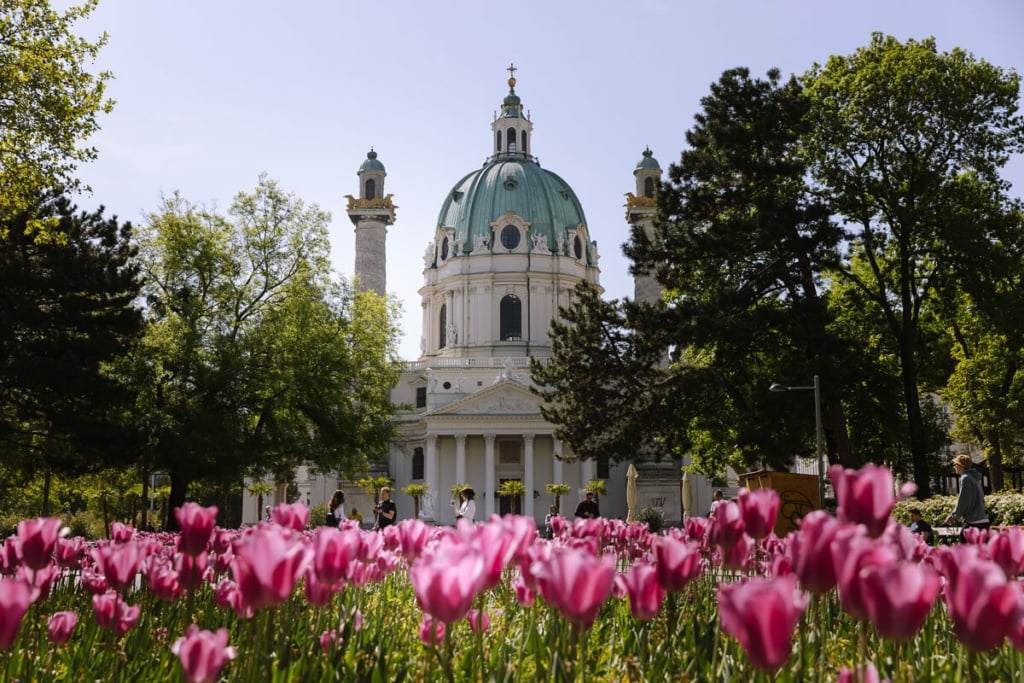
9. NASCHMARKT
Naschmarkt is an open-air market with about 120 stalls stretching for 1 kilometre along Wienzeile, just a short walk from the city centre.
You’ll find the usual selection of market goods, including cheeses, spices, meats, seafood and baked goods.
The market heavily features Austrian staples, including schnitzel, sausage and pastries. But there is also a wonderful selection of international dishes such as Turkish, Indian, Vietnamese and Italian.
Every Saturday, there is a flea market with vintage items, antiques, retro goods and unique souvenirs.
We loved the vegetarian-friendly options at Neni am Naschmarkt.



10. LEOPOLD MUSEUM
The Leopold Museum in MuseumQuartier houses the most important collection of modern art in Austria.
Dedicated to Secession Art (for which Viennese artists were the most influential), it tracks the historic break that occurred between the conservative art of the 19th century and the avant-garde artists of the 20th century.
The collection features significant pieces by Gustav Klimt and works by his followers, including Egon Schiele and Richard Gerstl.
In particular, the museum has over 200 works by Egon Schiele.
There are also other Modernism influences, including furniture and decorative arts.
You can book skip-the-line tickets for the Leopold Museum. Note that the museum is only open from Wednesday to Sunday.


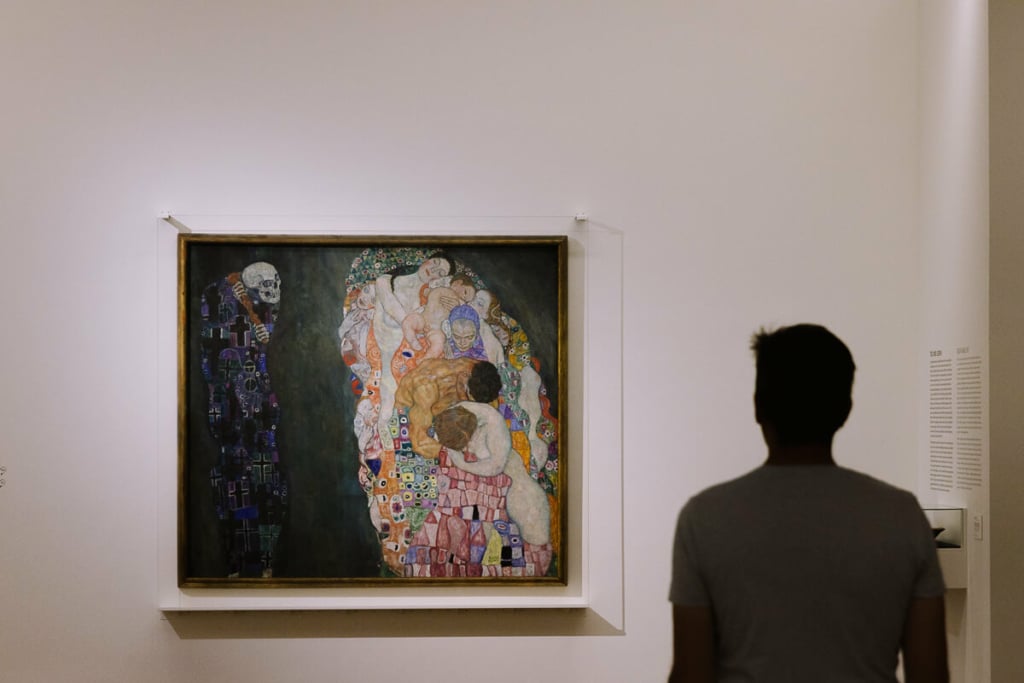
11. ALBERTINA MUSEUM
Whereas the Leopold Museum gives a unique insight into Viennese Art, the Albertina Museum is a whirlwind tour of European art from Monet to Picasso.
Once a remarkable private collection but gifted to the state, it’s a fantastic gallery with Impressionism, Pointillism, and Cubism.
You’ll find works by Monet, Picasso, Kandinsky, Klee, Miro, and Chagall. There are also drawings by Peter Paul Rubens, Gustav Klimt and Egon Schiele.
The permanent exhibition is Monet to Picasso which has a collection of rotating masterpieces.
Temporary exhibitions are housed on the top and bottom floors. On our visit, we were lucky to be treated to a Dialogue with Edvard Munch.
Book skip-the-line tickets for the Albertina Museum.


12. KUNSTHISTORISCHES MUSEUM
The Kunsthistorisches (KHM) Museum (The Museum of Art History) houses many of the treasures of the Habsburgs.
It’s so big you could spend a whole day here. There are four good reasons to visit.
Firstly, if you are interested in ancient history, there is a plethora of Greek, Roman and Assyrian sculptures and mosaics.
Secondly, the wide collection of strange curiosities in the Kunstkammer Wien picked up by the Habsburg Emperors over the centuries could keep you intrigued for hours.
Thirdly, the volume of works by grandmasters from the 16th to 18th centuries, including Rubens, Bruegel, van Dyck, Titian, and Tintoretto, is immense. In particular, the museum has the world’s largest collection of works by Pieter Bruegel the Elder.
But one of the best reasons to visit is the magnificent building itself. Sweeping staircases, frescoed ceilings, grey marble pillars, and massive doorways connect the rooms, which are adorned with important art.
Book skip-the-line tickets for Kunsthistorisches.



13. LUNCH AT PALMENHAUS
Palmenhaus – a massive greenhouse restaurant – is near many of the museums and a great place to take a break after hours of strolling around.
Dine inside, surrounded by towering palms, or enjoy the outdoor terrace overlooking the park.
It’s a great place to grab a coffee or a glass of wine. They also had some pretty decent vegetarian options, something that wasn’t too easy to find in many places in Vienna.
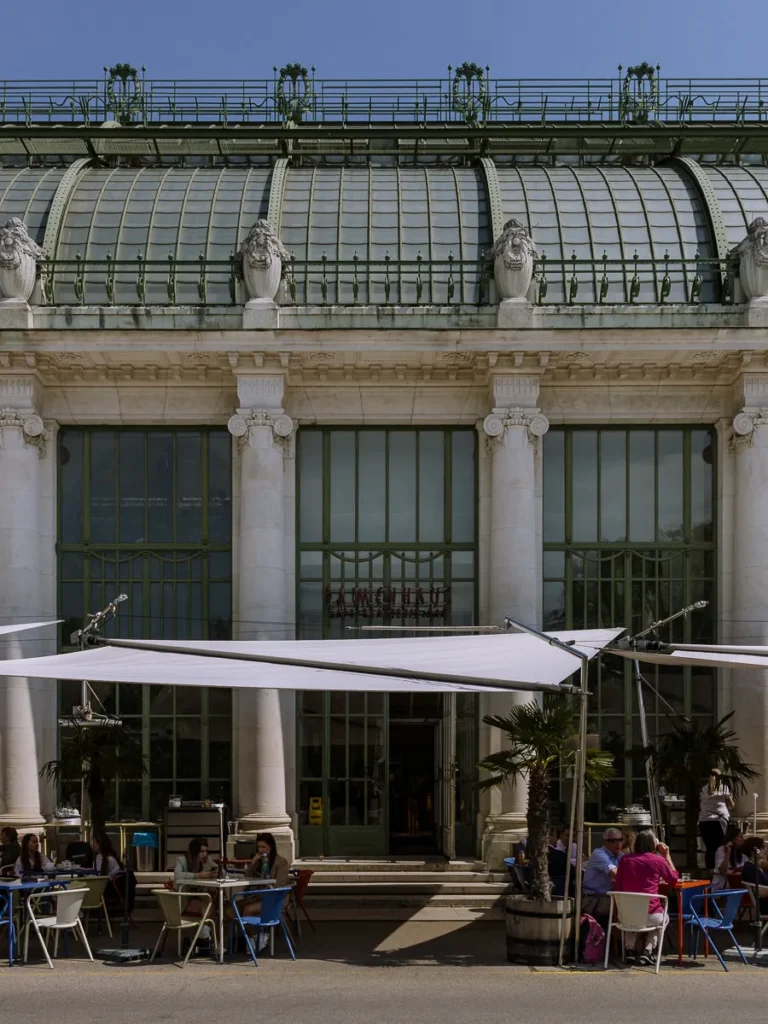

14. LEOPOLDSTADT & CANAL
If the Innere Stadt is home to old Vienna, then Leopoldstadt, just across the canal, is the younger, cooler neighbour. Vienna’s 2nd district is a cool part of town to explore.
Karmeliterviertel is a trendy urban neighbourhood with a laidback and unpretentious vibe. Its main market (Karmerlitermarkt) has a variety of food stalls during the week but becomes a vibrant farmers’ market on Saturday.
Down by the canal, modern street art brightens up the walls, while on sunny days locals flock to the bars and barges lining the waterfront.
You can hire a bike, go for a swim in a pool barge, or simply grab a drink and watch the world go by.


15. DINNER IN A BEISL
To experience old-school Vienna, you have to have a meal in a beisl. These traditional bistros are pared-back, down-to-earth establishments that have been serving the same fare for centuries.
The traditional dishes you need to try are Wiener Schnitzel, slow-cooked beef goulash with dumplings, and Tafelspitz – Viennese-style boiled beef.
Wash it all down with wine or locally brewed beer and end with a homemade strudel.
Our pick of the beisls is Griechenbeisl which has been serving food in atmospheric wood-panelled rooms since 1447.
The other great choice is Glacis Beisl, which has a wonderful outdoor courtyard lit by low-hanging lights.
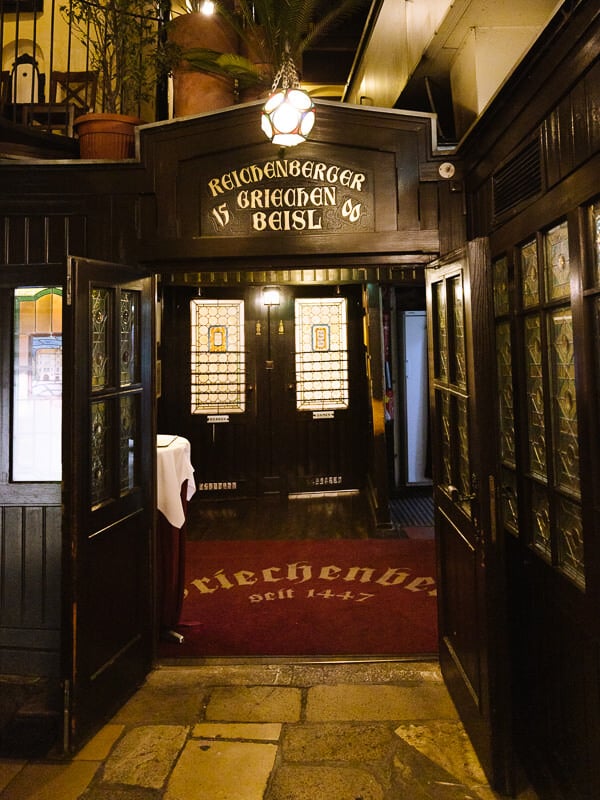

16. WIENER STAATSOPER
The Wiener Staatsoper (Vienna State Opera) is one of the most impressive opera houses in the world, although we think the Palais Garnier in Paris still tops it.
In the 18th and 19th centuries, the wealth and power of the Habsburgs attracted many composers looking to make their living. Mozart, Beethoven, Strauss, and Brahms are just a few who spent time creating masterpieces in Vienna.
Staatsoper is a beautiful building with ornate facades, decorated boxes, grand stairways and a spectacular foyer.
The main concert hall is a magnificent sweep of red velvet and curved boxes, and the intermission rooms and staircases are stunning.
The Staatsoper guided tour was one of the best things we did in Vienna. The standard tour takes around 40 minutes and includes the main foyer, auditorium and state rooms.



17. SUNSET DRINKS AT DACHBODEN LOFT
The rooftop bar of the 25 Hours Hotel, Dachboden Loft, is one of the best places in Vienna for a relaxed cocktail to watch sunset over the city.
Friendly staff, a chilled atmosphere, live music, and well-priced cocktails make it one of the best rooftop bars in the city.
The indoor space has an urban-inspired design, and the outdoor terrace has excellent views over Hofburg Palace and Rathaus.
Some classic bar snacks are available to order, or you can grab a pizza from the restaurant on the ground floor and bring it up to the bar.


18. RIDE THE WIENER RIESENRAD AT PRATER PARK
Prater Park, the city’s green playground, contains Wurstelprater. This massive amusement park is packed with nostalgic dreams of old fun fairs with enough crazy rides for the kids.
Ride the mysterious ghost train, hit the go-karts, or amble through a fun house. It’s a great thing to do in Vienna with kids.
The park is best known for the large Ferris wheel, Wiener Riesenrad, featured in the film The Third Man starring Orson Welles. Although the park is only open from March to October, the Ferris Wheel runs all year, weather permitting.
Book skip-the-line Wiener Riesenrad tickets.


WHAT WE MISSED
Our list of the 18 best things to do in Vienna our favorite experiences during our trips to the city. But here are a few more that you might enjoy.
The Sigmund Freud Museum, situated in the rooms where he practised, features exhibitions on the family’s life and the history of the development of psychoanalysis.
Rathaus is Vienna’s monumental Gothic Town Hall, a stunning Neo-Gothic building on the Ringstrasse.
Schonbrunn Palace is a 30-minute train journey from the centre of town. Complete with lavish baroque rooms and grand gardens on a mighty scale, Mozart played here in 1786.
The Secession Building could be interesting if you are a fan of Klimt.
MUMOK is another modern art gallery focusing on the 20th and 21st centuries. It’s a mix of nouveau realism, pop art, cubism, and photorealism in an imposing grey granite block of a building.
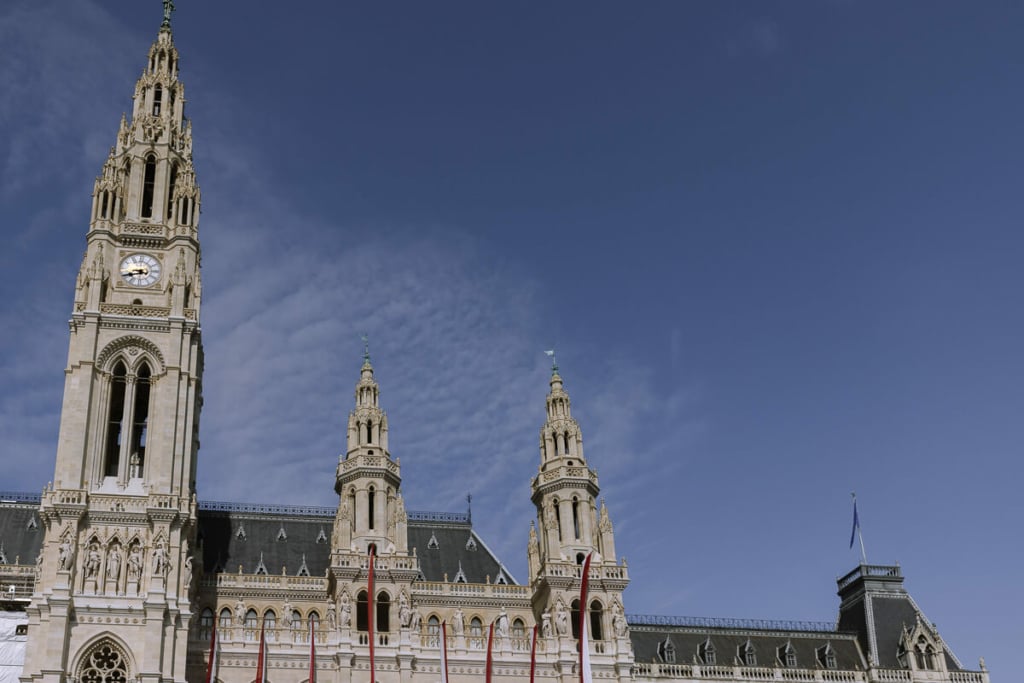
PLANNING & LOGISTICS
GETTING TO VIENNA
BY TRAIN
Vienna is located in the heart of Europe and trains from all over the continent arrive at Wien Hauptbahnhof Station.
The station is just a thirty-minute walk or a 10-minute metro ride to the centre of the city.
Check Austrian Rail for timetables and tickets.
BY AIR
Vienna International Airport welcomes flights from many airlines, but most routes are provided by Austrian Airlines, the country’s flagship carrier.
The airport is a 25-minute taxi ride (about €35-40) from the centre of town or a 15-minute train ride (leaving every thirty minutes) from Wien Hauptbahnhof Station (about €5).


BEST TIME TO VISIT VIENNA
The best time to visit Vienna is in the shoulder seasons of May to June and September to October. The temperatures are warm but not too hot and the city is in full swing but not too crowded.
Spring is particularly lovely as tulips and roses bring life and colour to the parks.
In June, two international music festivals (Vienna Jazz Festival and Donauinselfest) come to town, and two world-class orchestras perform for free.
In September, Vienna Fashion Week arrives, and in October, there is the Long Night of the Museums and the Film Festival.
In July and August, the city gets busy with tourists, hotel prices rise, and temperatures average 27 to 28°C. In the winter months, Vienna usually gets some snow with temperatures plunging to around zero, but December brings a wonderful Christmas spirit to the streets.
If you are flexible on what days to visit, try to avoid Tuesday as almost all the museums are closed.


HOW MANY DAYS SHOULD YOU SPEND IN VIENNA?
We recommend staying 2 to 3 days in Vienna.
In two days, you can explore the Hofburg Palace, the Innere Stadt, and Schloss Belvedere, and try plenty of traditional Austrian food.
A third day allows time to visit more of Vienna’s museums. If you are an art fan, you could easily spend an extra day collecting from some of the smaller galleries.
WHERE TO STAY IN VIENNA?
Vienna has a flair for boutique hotels with style. Many are in refurbished grand old residences that incorporate chic design with traditional style. So, if you’re looking for a special weekend getaway, Vienna is a great choice. Here are some recommendations from us.
- Boutiquehotel Das Tyrol (€€€) – This modern design 4-star boutique hotel is decorated with original works by contemporary Viennese artists.
- Hotel Motto (€€€) – In a grand building on the main shopping street of Vienna, this hotel has wonderfully stylish touches, a cool breakfast/cocktail bar, and a sun-drenched rooftop terrace.
- Hotel Imperial (€€€€)- The height of luxury and grandeur in the heart of Vienna, this grand dame hotel transports you back to the days of the Austro-Hungarian Empire.


VIENNA TOURS
Most of Vienna’s main attractions are easily accessible without a tour. However, here are some we recommend, including a day trip to the beautiful Hallstatt.
- Hofburg Palace – This walking tour of Vienna includes several sites in the palace complex.
- Musikeverein – Hear Vivaldi’s Four Seasons in Vienna’s Musikverein.
- Hallstatt Day Trip – This day trip to the Alps includes the Instagram-friendly Hallstatt.
VIENNA DISCOUNT CARDS
Vienna travel cards are available for 24 hours (€8); 48 hours (€14); or 72 hours (€17); or as part of the Vienna City Card. It provides free travel on all public transport in the centre of Vienna.
A single trip costs €2.40, so if your hotel is a little out of the centre, it could easily save you money, especially if you are spending a few days in Vienna.
The Vienna City Card gives you discounts (about 20%) on almost all museums and sights.


This guide was produced in partnership with the Vienna Tourist Board.
MORE EUROPE GUIDES
- Catch up on our favourite things to do in Innsbruck.
- Discover some of the best food Italy has to offer with our guide to visiting Bologna.
- Revel in the Renaissance masterpiece highlights of Florence
- Visit one of the best-preserved medieval cities in the world with our guide to Siena.
- Collect the main highlights and a few hidden gems with our 3-day Paris itinerary.
- Get to know the cool side of Antwerp, Belgium.
- Explore street art, cool bars, and pastel de nata in our guide to do in Lisbon
- Discover Moorish history and the best tapas with our guide to the best things to do in Seville.

READER-SUPPORTED
When you buy through links on our site, we may earn a small affiliate commission at no extra cost to you.
Thanks for your support.
Paul & Mark.


Vienna was an absolutely delightful city to visit. The architecture was stunning, with a mix of grand old buildings and modern structures. The food was delicious, particularly the pastries and coffee. The city was also very clean and well-maintained. Highly recommend.
Nice guide! No local would recommend the Freud Museum but if you are in the area, there is a lovely cafe downstairs and a corresponding book store. If you are not so keen about museums you really should explore one of the many parks, refresh youself with some water activities around the Donauinsel or try a short hike up Kahlenberg.
That’s the beauty of being a tourist sometimes, you can try thing locals would roll their eyes at! All great suggestions, we’ll need to have another trip back to Vienna soon.